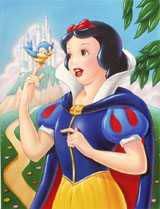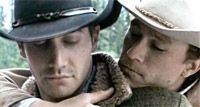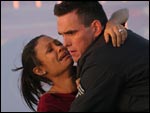
It was the first film I saw in the theaters when I became a student at the University of the Arts. It remains one of my all-time favorite films, not just because I always enjoy the ride and I love the characters, but also because the themes of the movie relate to so many pieces of my life, including things that I think are wrong with the world. Little Miss Sunshine is a dark road-trip comedy, a touching family drama, but above everything, I believe the film is a critique of American society. It criticizes the American attitude of winning at all costs, it attacks America’s obsession with sex, and their obsession with hiding said obsession, and it criticizes the American dream, by showing a group of characters close to misery in their search for the American dream, and their discovery of happiness as soon as they reject that American dream and embrace each other.
The film tells the story of Olive Hoover, a little girl whose dream is to become a Beauty Queen, which is an ironic dream for this little girl, since her appearance suggests the opposite of beauty. She’s overweight, she wears dorky glasses, and she doesn’t have an eating disorder, but her dream is to be one of those girls who wear a tiara and a ribbon around her chest. Olive is surrounded by a group of adults who are all at different stages of chasing their own dreams, but none of those stages is success. Richard, her father, is a motivational speaker who is trying to sell his 9-Step program for publishing. Dwayne, her older half-brother, dreams of leaving the house forever as soon as he gets a chance and becoming a test pilot for the Air Force, and to show his disdain for his current life, he’s taken a vow of silence until he reaches that goal.
Her gay uncle Frank is past failure. His dream was to be regarded the #1 Proust Scholar in the United States, but an unrequited love he had for one of his students made him do some stuff he regretted, which got him fired, and led to an attempted suicide, and has now landed him on a cot in his sister’s house (Olive’s house). Her grandfather may have had a dream once, a long time ago, but now he just lives life one day at a time and enjoys himself, snorting heroin and sleeping around, because life has disappointed him and he just wants to do whatever he wants. Holding all these men together is Sheryl, Olive’s mother. She has no time for dreams, because she has to finance her husband’s motivational program, and care for all these men living in her house. She also provides the love and support needed for this family to go on, but with no help from any of the people around her, she can barely hold it together.
The film begins with Sheryl picking Frank up from the hospital, getting him settled in Dwayne’s room, and everybody sitting down for dinner, which is where we learn every conflict in this family before they get the news that will set them off on their road trip. During these scenes, we see symbols on many of the objects that represent America, like a McDonalds sign on the cups they drink from, or the clowns drawn on the pillows on Frank’s cot, which stand out from Dwayne’s somber room, filled with white wallpaper and a drawing of Friedrich Nietzsche. This room is the only room in the house that isn’t bright and sunny, and doesn’t have any symbols of American life, so it stands out from the house as a place where Dwayne doesn’t belong, and to an extension, a place where Frank doesn’t belong and is being placed in by forces outside those within the room. They are also eating bucket chicken for dinner on paper plates. These are American symbols that tell the audience that this family is failing at pursuing the American dream, and from the conversation at the table, we see that they are failing at being a family.
When the family gets a message that Olive will be competing in the Little Miss Sunshine pageant this Sunday in Redondo Beach (900 miles away from Albuquerque, where they live), the entire family is forced to crowd into their bright yellow VW bus for two days before they arrive at the competition that will change their lives together. I believe the yellow bus is a symbol for the family that travels inside of it. It may need a little push to get started again (once the clutch stops working), but it’ll get you where you need to go. The bus is an old VW that no one would consider when dreaming up the American dream, but the fact that the bus is a very bright and welcoming shade of yellow represents that the family already has what they need. They already have that ray of sunshine that they expect to gain when they’ve accomplished their dreams, they just can’t look past the fact that it’s a VW bus and their stuck together, but during their travels, the only thing these characters can count on are the bus and each other.
I’d like to talk about Grandpa. He dies half way through the film, but his presence remains throughout (and I don’t mean his body in the trunk of the car). In a way, he can be viewed as the mastermind behind the entire plot, and as soon as he’s gone, the family can do nothing but be surprised by what he has in store for them. Grandpa represents a complete rejection of the American dream and everything that goes with it. He’s been alive for 80 years, he’s lived through wars, through at least 10 Presidents, changes in technology, and the one thing he has learned in all that time is that the American dream, and all the rules he’s had to live by to achieve it are just not worth it. Early in the film, Grandpa has a conversation with Dwayne, and gives him a piece of advice, which is to “fuck a lot of women. Not just one woman, a lot of women”. Grandpa regrets having lived by the rules society provided him, like getting married and raising a family, that he wishes he could’ve had more women and more adventures. Now, he just wants to do what he wants, which got him kicked out of the last retirement facility he checked into. Richard pressures Olive to win the competition, but Grandpa tells her to just have fun. Before he puts her to sleep for the last time, he tells her that “a real loser is someone who’s so afraid of not winning, they don’t even try”, so even if she doesn’t win the competition, she’s still a winner, and that’s his view on what life is all about before it was tampered by the capitalistic society that is our country.
The film follows these characters as the dreams that still remain are slowly shattered. On the way to Redondo Beach for the Little Miss Sunshine competition, Richard learns that no one would buy his 9-Step program and there’s nowhere else to go from there, according to Stan Grossman (Richard’s agent, who was trying to get the program sold at an auction), so he’ll have to start from scratch, and probably go bankrupt. Dwayne breaks his vow of silence in a fit of rage when he learns that he’s colorblind. Olive takes some eye tests from the hospital where Grandpa died and tested them on Dwayne, and because of that, Dwayne found out he was colorblind and they won’t let him become a pilot if he’s colorblind. After both these dreams are shattered, there is still one dream that can be reached, and that is Olive’s dream, but throughout the film we find hints that this American dream should be rejected.
The waitress at the restaurant, and the mechanic who tells them about pushing the car, the only two people on the road that are of any help to them, are both Mexican. Mexicans are people on the hunt for the American dream, and in many cases, American rejects them, so the fact that the mechanic who helps them and the waitress who is nice to them are both from a country that the United States looks down upon, it says something about the American dream they should be rejecting. There’s also this subtle little hint in the motel room scene, where Richard and Sheryl are arguing and Dwayne can hear them through the wall. Frank tells him not to listen to that and turns on the TV, but Dwayne turns it off and says he'd rather listen in while his mother and stepfather argue. When Frank turned the TV on, President Bush was giving a speech in front of Congress. The fact that Dwayne turns the President of the United States off shows us that the movie is rejecting what America represents. It’s turning off the leader of the country (at the time) in favor of listening to the problems of people we’ve grown to care about. The road trip also foreshadows the American obsession with sex shown in Act III when the family gets pulled over by a cop, and the cop inspects the trunk (where Grandpa’s body is), but lets Richard go because some porn magazines that Grandpa had Frank buy earlier fell off the trunk and the cop is aroused by those magazines, so he lets him go, because he shares that obsession with Richard.
As soon as the family arrives at Redondo Beach to sign Olive up to the competition, the place we’ve been waiting the whole film to arrive to, we find that it’s the last place we want to be in, and in this room, we see everything that is wrong with beauty pageants, especially when little girls are involved. When Olive walks backstage with her mother, we see the other contestants in bathing suits, sometimes bikinis, with tans sprayed on their legs and giant hairdos placed on their heads. During the pageant, there’s an interesting cut to the beach outside the hotel, which looks empty and depressing. The MC is singing “America the Beautiful” to the pageant contestants as they stand next to each other, and as soon as it cuts out to the beach, we hear the MC saying “America, you are so beautiful…” before we pan over to Frank and Dwayne on the peer, leaning toward the ocean, and we hear Dwayne saying “sometimes I wish I could sleep till I was 18 and skip all this crap, High School and everything.” This is what American has done to both of these characters. They each had big dreams, and had them shattered by a country that would not accept them unless they were winners, and it’s through this conversation that Dwayne realizes you should “do what you love and fuck the rest.” What I love about this cut is how the MC says, “America, you are so beautiful” over one of the most depressing sceneries. It's like playing "What a Wonderful World" over images of massacre and carnage in Good Morning Vietnam. It’s good for a hint of irony.
Olive’s dance routine is the ultimate “fuck you” to American society. The reason why I say Grandpa appears to be the mastermind of the whole plot is because he’s providing a message to his family through this little girl who doesn’t understand a sexual dance. The way she does it is fairly innocent. She just memorized moves and is mimicking them on the stage, the way she rehearsed them, but we know that Grandpa choreographed this dance, which tells us a lot about him and what he wants to say to his family.
Thinking back on the music of this film, I realize that it did everything it could to sound foreign. The score is by Michael Daynna, with the help of a Latin group called DeVotchka (including an original song at the end). The motel sequences include mariachi music, and throughout, most of it sounds very ethnic to Southern American countries, which I believe is an attempt to alienate the audience from the country they’re in and get us to listen to other cultures with its music. The music, and the two Latino characters, is a subtle way of exposing another American hypocrisy, which is its openness to outsiders. It doesn’t delve on the subject and it doesn’t preach on it, but by celebrating it in a movie that ditches the American Dream, I’m led to believe that it exposes this hypocrisy by making the sounds of the film very ethnic, even if the film is not. I read a review that said that the song over the end credits sounds like it belongs in Babel. Now that I think about it, maybe that was the point, only it didn’t tell us about it.
The filmmaking techniques of this film rely heavily on the characters. During the initial scene, we cut to practically every character on the table, even if the conversation doesn’t necessarily involve that character at the time, or even if the character isn’t talking, the film treats them all as one unit together against that one common enemy, and that is the American Dream. Everything about the film establishes that the characters should be pursuing each other, the concrete and present human people they can depend on, and not some dream that they don’t know if they’ll ever reach. Every reaction from each character is important, which is why when Frank talks about his suicide attempt, it cuts to every character on the table. They are all there, and even though they tend to get on each other’s nerves and disagree all the time, this family is the one thing that each and every one of its members can count on.
People from all over the world come to this country in search of the American Dream, because we hear all of the success stories of actors and directors and writers and fashion designers, but this is the story of those unsung heroes looking for someone to sing about them, only to realize that all they need is each other. The film tells us that reaching for the American Dream can be futile, and it uses its formal elements to get us away from that dream, and reach toward what really does matter.













